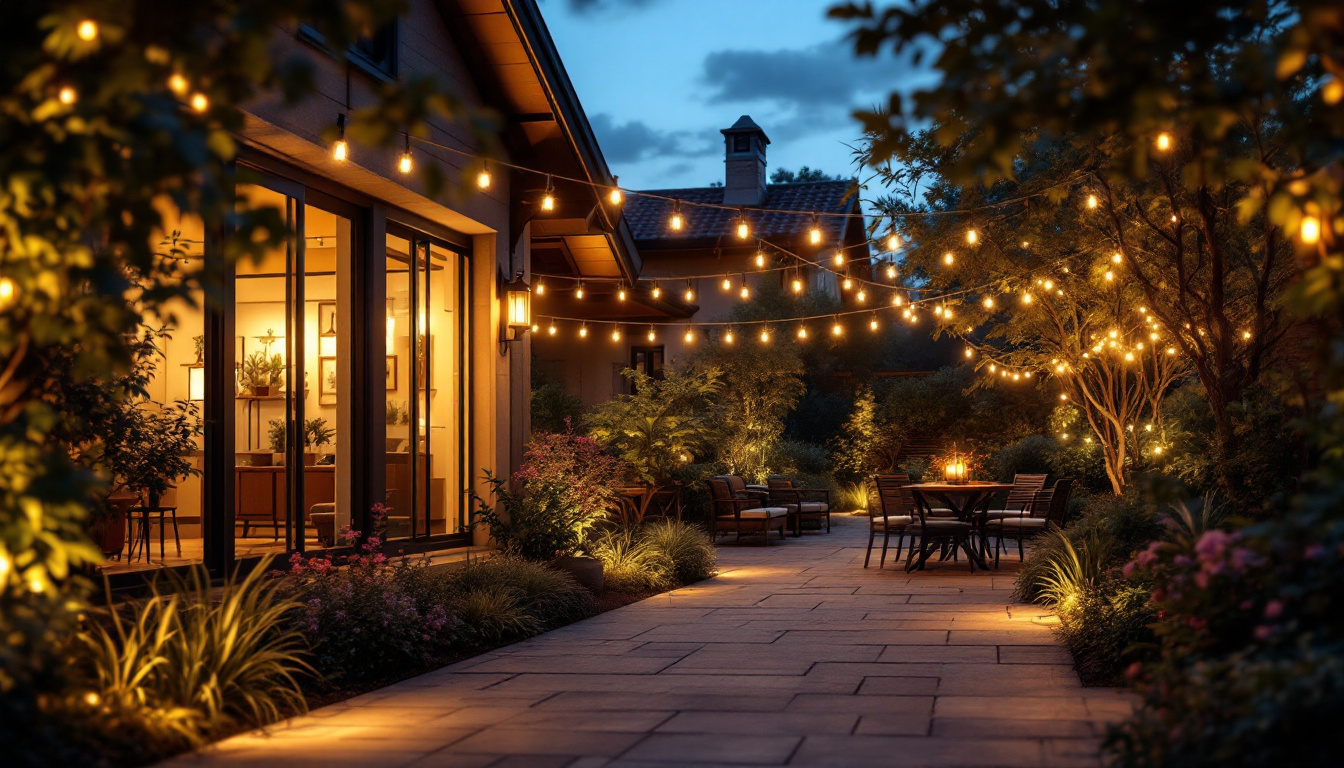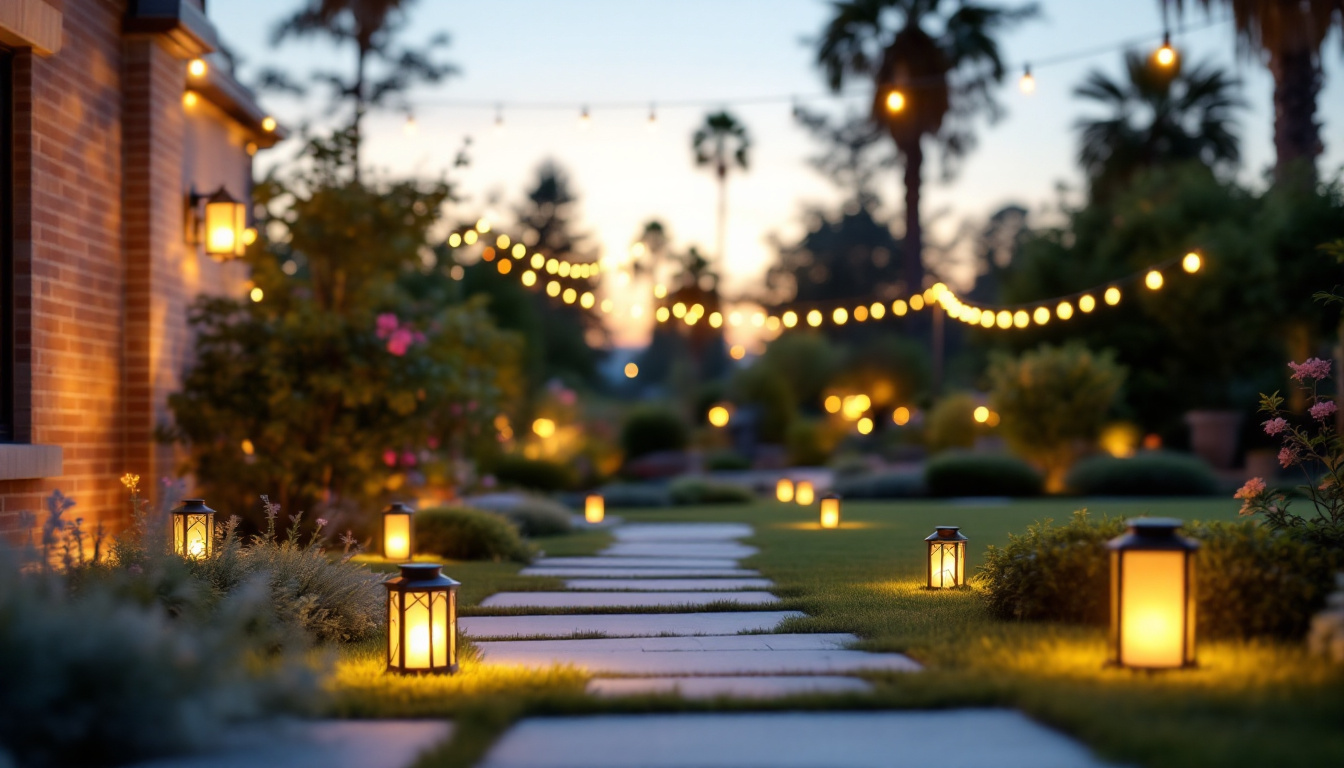
In the realm of outdoor lighting, automatic systems have revolutionized the way spaces are illuminated. For lighting contractors, understanding the intricacies of automatic outdoor lighting is essential for delivering optimal solutions to clients. This article delves into the various aspects of automatic outdoor lighting, providing insights that can enhance both installation practices and customer satisfaction.
Automatic outdoor lighting systems are designed to provide illumination without the need for manual operation. These systems typically rely on sensors, timers, or smart technology to activate lights based on environmental conditions or preset schedules. The primary goal is to enhance safety, security, and convenience in outdoor spaces. By integrating these systems, homeowners can create a welcoming atmosphere while ensuring that their properties remain well-lit and secure during the night.
There are several types of automatic outdoor lighting systems available, each with its own set of features and applications. The most common types include:
Implementing automatic outdoor lighting systems offers numerous advantages for both contractors and clients. Some of the key benefits include:
Moreover, automatic outdoor lighting can also contribute to the aesthetic appeal of a property. By strategically placing lights to highlight architectural features, landscaping, or outdoor art, homeowners can create a visually stunning environment that enhances the overall ambiance of their outdoor spaces. This not only increases the enjoyment of the area but can also boost property value, making it an attractive investment for those looking to enhance their homes.
Furthermore, many automatic outdoor lighting systems are now designed with weather resistance and durability in mind, ensuring they can withstand various environmental conditions. This longevity means homeowners can enjoy the benefits of their lighting systems for years to come with minimal maintenance. With advancements in technology, some systems even offer features like color-changing LEDs and integration with home security cameras, providing a comprehensive solution for outdoor illumination and safety.
To effectively install and maintain automatic outdoor lighting systems, lighting contractors must be familiar with the key components that make these systems function. Understanding each component’s role can lead to more efficient installations and fewer service calls.
The choice of light fixtures is crucial in automatic outdoor lighting systems. Fixtures must be durable and weather-resistant, as they are exposed to the elements. Options include LED, halogen, and fluorescent lights, each with distinct advantages. LED fixtures, for instance, are highly energy-efficient and have a long lifespan, making them a popular choice. Additionally, the design of the fixtures can significantly impact the aesthetic appeal of the outdoor space. From sleek modern designs to more traditional lantern styles, the right fixture can enhance the overall ambiance while providing necessary illumination. Furthermore, the color temperature of the lights can influence the mood of the environment; warmer tones tend to create a cozy atmosphere, while cooler tones can lend a more contemporary feel.
Sensors are the heart of automatic lighting systems. Motion sensors detect movement and activate lights accordingly, while photocells measure ambient light levels to turn lights on or off based on natural light availability. Understanding the different types of sensors and their optimal placement is critical for maximizing effectiveness. For instance, passive infrared sensors are excellent for detecting body heat, making them ideal for security lighting, while ultrasonic sensors can cover larger areas and are less sensitive to environmental factors. Additionally, integrating multiple sensors can create a layered lighting approach, enhancing both safety and convenience. This layered strategy not only provides illumination when needed but also helps conserve energy by ensuring lights are only on when necessary.
Control systems can range from simple timers to sophisticated smart home integrations. Timers allow for scheduled lighting, while smart systems offer remote access and customization. Contractors should be adept at configuring these systems to meet the specific needs of each client, ensuring ease of use and functionality. With the rise of smart technology, many systems now allow for voice activation and mobile app control, providing users with unprecedented convenience. Moreover, these advanced systems can often be programmed to respond to specific conditions, such as automatically dimming lights during certain times of the night or adjusting brightness based on the weather. This level of customization not only enhances user experience but also contributes to energy savings, making automatic outdoor lighting systems more sustainable and cost-effective in the long run.
Installing automatic outdoor lighting systems requires careful planning and execution. Following best practices not only enhances the performance of the lighting but also ensures client satisfaction.
A thorough site assessment is essential before installation. This involves evaluating the layout of the property, identifying key areas that require illumination, and determining the best locations for fixtures and sensors. Factors such as landscaping, building architecture, and potential obstructions should be considered to ensure optimal light coverage.
Ensuring that wiring and connections are done correctly is vital for the safety and longevity of the lighting system. Contractors should adhere to local electrical codes and standards, using weatherproof materials and connections to prevent damage from moisture and environmental factors.
After installation, testing and calibration of the system are crucial. This involves checking the functionality of sensors, adjusting light levels, and ensuring that fixtures are positioned correctly. A well-calibrated system will operate efficiently and meet the client’s expectations.
Regular maintenance of automatic outdoor lighting systems is essential to ensure longevity and performance. Contractors should educate clients on the importance of maintenance and offer services to keep systems in optimal condition.
Conducting routine inspections allows contractors to identify potential issues before they become major problems. This includes checking for burnt-out bulbs, ensuring sensors are functioning correctly, and verifying that wiring is intact. Regular inspections can significantly extend the life of the system.
Outdoor fixtures are susceptible to dirt, debris, and weather-related wear. Regular cleaning of fixtures and sensors will help maintain their performance and aesthetic appeal. Clients should be advised on how to safely clean their outdoor lighting systems, or contractors can offer professional cleaning services as part of their maintenance package.
While automatic outdoor lighting systems offer numerous benefits, they can also present challenges. Being prepared to address these issues can enhance a contractor’s reputation and client satisfaction.
Motion sensors can sometimes be triggered by animals, passing cars, or even strong winds. This can lead to unnecessary energy consumption and annoyance for homeowners. Educating clients on the sensitivity settings of their motion sensors and offering solutions, such as adjusting the sensor’s angle or using different sensor types, can mitigate this issue.
Smart outdoor lighting systems rely on Wi-Fi or Bluetooth connectivity, which can sometimes be unreliable. Issues such as weak signals or interference can disrupt functionality. Contractors should ensure that clients have a strong network signal in the areas where smart systems are installed, and provide troubleshooting tips for connectivity issues.
The field of outdoor lighting is continually evolving, driven by advancements in technology and changing consumer preferences. Staying informed about these trends can help contractors remain competitive and meet client demands effectively.
As smart home technology becomes increasingly popular, the integration of outdoor lighting with home automation systems is expected to grow. This allows homeowners to control their outdoor lighting alongside other smart devices, enhancing convenience and energy management. Contractors should familiarize themselves with various smart home platforms to offer integrated solutions.
With a growing emphasis on sustainability, energy-efficient lighting solutions will continue to gain traction. LED technology, solar-powered lights, and systems that utilize renewable energy sources are becoming more prevalent. Contractors should be prepared to educate clients on the benefits of energy-efficient options and how they can contribute to reducing their carbon footprint.
Automatic outdoor lighting systems offer a blend of convenience, security, and energy efficiency that is increasingly sought after by homeowners. For lighting contractors, understanding the components, installation best practices, and maintenance of these systems is crucial for delivering exceptional service. By staying informed about trends and challenges in the industry, contractors can position themselves as knowledgeable professionals, ready to meet the evolving needs of their clients.
As the demand for automatic outdoor lighting continues to grow, embracing these technologies and practices will not only enhance the quality of installations but also foster lasting relationships with clients. The future of outdoor lighting is bright, and contractors who adapt to these changes will undoubtedly thrive in this dynamic field.
Ready to elevate your lighting installations with the latest in automatic outdoor lighting systems? Look no further than LumenWholesale for a comprehensive selection of spec-grade lighting products that promise quality, affordability, and convenience. Say goodbye to middleman markups and hello to unbeatable wholesale prices, backed by our commitment to hassle-free bulk buying and free shipping. Don’t compromise on performance or price. Visit LumenWholesale today and discover the best value in wholesale lighting for your next project.

Discover how Service Lighting And Electrical Supplies Inc. has become the essential partner for completing lighting projects with precision and quality.

Discover expert insights and practical tips on selecting and installing 4-foot light bulbs for lighting contractors.

Discover the benefits of solar lighting for outdoor spaces and learn how to implement effective, eco-friendly lighting solutions.

Discover the transformative power of LED ceiling lighting with insights from top lighting contractors.